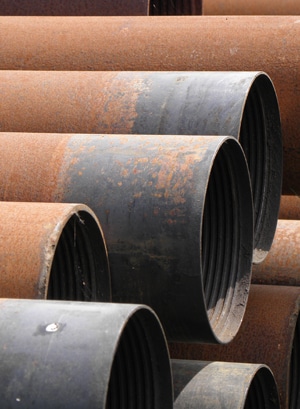
Trenchless pipe repair has revolutionized the way homeowners and businesses approach sewer and drain line issues. Instead of tearing up lawns or driveways to reach buried pipes, trenchless technology allows for minimally invasive repairs with long-lasting results. But how long can you expect a trenchless pipe repair to last? And how does it compare to traditional pipe replacement methods?
Understanding the lifespan of trenchless solutions, and the variables that impact their durability, can help you make an informed decision when it’s time to address plumbing issues under the surface.
Understanding Trenchless Pipe Repair
Trenchless pipe repair methods, such as pipe lining (Cured-in-Place Pipe or CIPP) and pipe bursting, are designed to either create a new pipe within the old one or replace the old line entirely without the need for extensive excavation. Both techniques are widely used to repair sewer lines, drain pipes, and water supply lines with minimal disruption to landscaping, hardscapes, and structures.
The major benefit? A faster turnaround, lower labor costs, and far less damage to your property compared to traditional trench-digging methods.
How Long Does Trenchless Pipe Repair Last?
When performed correctly using high-quality materials, trenchless pipe repairs can last anywhere from 50 to 100 years. This makes it a comparable—and in some cases superior—alternative to conventional pipe replacement in terms of longevity.
The resin used in CIPP lining cures into a durable, corrosion-resistant, and seamless material that is less prone to root intrusion and leaks. Likewise, the high-density polyethylene (HDPE) pipes used in pipe bursting are designed to resist chemical damage, rust, and shifting soil.
Factors That Influence Lifespan
While trenchless pipe repairs are built to last, several factors can affect the actual lifespan of the repaired or replaced pipes:
- Material Quality: The durability of epoxy resin or HDPE pipe directly influences longevity. Poor-quality materials may degrade faster or fail under pressure.
- Installation Precision: A trenchless repair is only as strong as the technician performing it. Improper curing or misalignment can reduce the system’s effectiveness.
- Soil Conditions: Harsh soil conditions, such as those with high acidity or shifting ground, can accelerate wear over time, though trenchless materials are typically resistant to most soil challenges.
- Water Pressure and Usage: Heavy commercial or industrial usage can wear down systems faster than residential use, especially if not designed with capacity in mind.
- Maintenance: Regular inspections and professional cleanings help preserve the integrity of the system over time. According to this article, proactive plumbing maintenance significantly extends pipe life.
Is Trenchless Pipe Repair a Better Long-Term Investment?
Many property owners find that the upfront cost of trenchless pipe repair—while sometimes higher than traditional methods—is justified by its longevity, efficiency, and reduced property disruption. When you factor in the potential costs of repairing driveways, landscaping, and patios disturbed by open trenching, trenchless often comes out ahead financially.
Plus, the long-term reliability of trenchless pipes, especially with proper care, can prevent future leaks, collapses, or root intrusions. This makes it an attractive solution for homeowners looking to boost their property’s infrastructure and value.
Environmental and Structural Benefits
Trenchless technology is not only efficient—it’s also environmentally responsible. By avoiding widespread excavation, the process protects trees, plantings, and soil ecosystems. It also reduces the amount of debris and materials sent to landfills, since the old pipe is either left in place or broken up underground.
If you’re environmentally conscious, this EPA page on green infrastructure practices is a useful read.
When Is Trenchless Not Ideal?
While trenchless pipe repair works for most properties and pipe materials, there are some exceptions. Severely collapsed pipes, pipes with extensive joint dislocation, or pipes that are too deteriorated may not be suitable for lining. A professional drain camera inspection is essential to determine if your system qualifies for trenchless repair.
Drain Masters – Trenchless Pipe Repair Services in San Diego
Choosing the right repair method is just as important as choosing the right plumbing company. At Drain Masters, we’ve performed trenchless pipe repairs across San Diego County using state-of-the-art equipment and time-tested techniques. Our team focuses on efficient, non-invasive repairs that extend the life of your plumbing while protecting your property’s appearance. If you suspect underground plumbing issues, our experienced professionals can guide you toward the most reliable, long-lasting solution.

